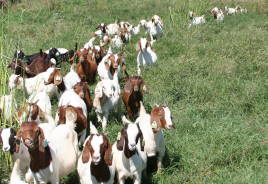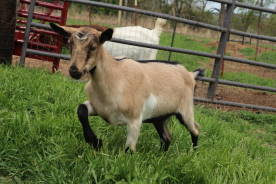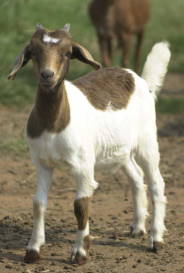Metabolizable Energy (ME) Requirement For Growing Goats
(Meat, Dairy, And Indigenous; ≤1.5 Years Of Age)
| Show/hide all text (hiding text will display calculator only) |
|
Use this Energy Requirement Calculator to calculate the daily energy requirement for young growing goats. Enter the data into the table below and then click the Calculate Energy Requirement button. The results will be displayed in the table at the bottom of the page.
Example
We will use a 30-kg meat goat wether gaining 150 g/day.Sources used in this calculation method are:
AFRC. 1998. The Nutrition of Goats. CAB International, New York, NY.
Luo, J., A. L. Goetsch, T. Sahlu, I. V. Nsahlai, Z. B. Johnson, J. E. Moore, M. L. Galyean, F. N. Owens, and C. L. Ferrell. 2004. Prediction of metabolizable energy requirements for maintenance and gain of preweaning, growing, and mature goats. Small Ruminant Research 53:231-252.
NRC. 2000. Nutrient Requirements of Beef Cattle, 2000 Update. National Academy Press, Washington, DC.
Sahlu, T., A. L. Goetsch, J. Luo, I. V. Nsahlai, J. E. Moore, M. L. Galyean, F. N. Owens, C. L. Ferrell, and Z. B. Johnson. 2004. Nutrient requirements of goats: developed equations, other considerations and future research to improve them. Small Ruminant Research 53:191-219.


.JPG)
